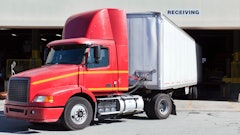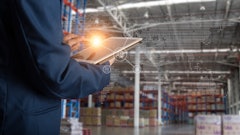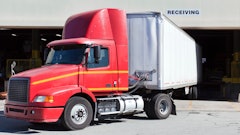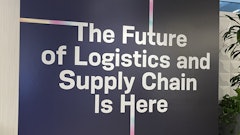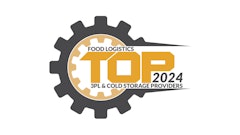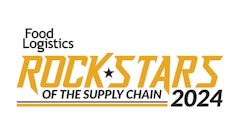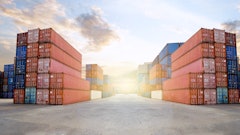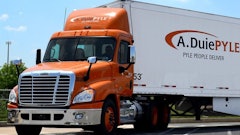Life would be a lot simpler and angst-free if your fairy godmother could simply wave a magic wand and “poof!” the perfect third-party logistics provider (3PL) appears instantly at your doorstep. As one insider quipped, “You have to be careful because there are a lot of toads out there.”
So how should food shippers approach their quest for that princely 3PL without mistakenly choosing a toad that could wreck havoc on companies’ supply chains, customer service levels and reputations? Let’s first take a look at a company that found a perfect match in the 3PL it chose.
The Right Stuff
Amelia Bay produces highly valuable and very fragile concentrated liquid botanical extracts for clients making ready-to-drink tea products, ice creams, sorbets and frozen yogurts.
“The parameters of the ingredients in our liquid product constantly must be kept at the proper temperature, or the ingredients will separate,” explains Sue Ann Rhodes, director of operations for the Alpharetta, GA-based company. “So when we request that our product remains chilled and somehow it is accidentally frozen, that product is ruined because when it thaws, the liquid will not return into a solution again. Sataria, our 3PL, understands that when we say the product must remain chilled, we mean it can reach a minimum of 35 degrees Fahrenheit and no lower. Sataria will not put our product on a truck for delivery to our customers if it has not been maintained within the specified temperature range.”
It’s also a source of peace of mind for Amelia Bay to know that Sataria carries the proper liability coverage in the event that something happens during delivery. “We are assured that our product is 100-percent covered,” notes Rhodes. “This is extremely important, as there are many companies out there who may allow you a few cents on a pound of product. But our products are worth around $10 per pound.”
When products leave Amelia Bay’s facilities, they are in A-1 condition and the company expects those products to arrive at their customers in that same A-1 condition. “We don’t want to have claims due to something like a punctured drum of product because of undue rough handling,” Rhodes continues. A damaged drum would be unacceptable to a customer and creates a situation with the potential to affect the company’s pristine customer service levels.
Prior to its four-year-long relationship with Sataria, Amelia Bay was no stranger to the uneasy situation of being bumped from a scheduled pickup because the scheduled carrier’s earlier customer had loaded an extra two pallets, leaving no room for Amelia Bay’s shipment. These incidents meant shipments had to be held over until the following day, which negatively affected the company’s supply chain and customer service.
“Now with Sataria as our 3PL, we don’t have to worry about there not being enough room for our shipments, because when we call for a pickup, we know that pickup will happen when we need it to happen,” Rhodes says.
Having the perfect 3PL relationship means Amelia Bay rests assured it has an entire team at Sataria who understands the company’s unique requirements. “The people I work with at Sataria really network with each other so that if I place my pickup order with one person there, the others in the team are always aware of it,” explains Rhodes. “So there is a shared knowledge among the team relative to our specific needs.”
For this small, niche company, getting acceptable shipping rates is guaranteed through Sataria’s extensive network. “I wouldn’t be able to get these kinds of rates on my own,” Rhodes reports. “When I put us into their cooperative, I know I am saving a lot of money without having to call around to find the best rates from a company who will be able to meet my pickup and delivery requirements.”
The ideal partnership between a shipper and its 3PL rests on a foundation of mutual trust through periodic communication. “When I pick up the phone to call Sataria, there is always someone there to answer my call; when there isn’t, they get back to me within 30 minutes, which for us could be the difference of having a truck or not having one available to deliver our products when our customers need them,” Rhodes says.
The Do List
Companies contemplating moving their logistics and transportation functions to a 3PL might easily be overwhelmed at the prospect of beginning the quest for a 3PL. What questions should you ask and how many prospective 3PLs should you solicit in order to have enough information to help you choose just the right 3PL for your needs?
Robert Russo of Port Jersey Logistics suggests comparing the functions of about three companies. “Some smaller companies I have worked with do one of two things when they start looking for a 3PL,” says Russo, president of the Monroe, NJ-based company. “They go to everyone in the market they can think of and it gets so overwhelming for them as they try to compare service, quality and price. Or they go to just one or two and discover they don’t have enough information to make a true comparison that will help them make the right decision.”
According to the experts we interviewed, the following are some of the top metrics to use as you collect information to help you develop your comparison of providers.
1. Know what your needs are. You might want to work with a 3PL with more capital if you are a large shipper with lots of shipments leaving many of your facilities, notes Bob Moran, CEO of Indianapolis, IN-based Sataria Group. “Having more capital to work with, the 3PL could set up more dedicated systems for you and do custom software development. It is very important for you to know what the tasks are for your provider so the 3PL you choose will be able to perform those tasks.”
The main goal in a 3PL partnership is built on collaboration, says Charles Bostick, director of operations and transportation for Vantix in Carrollton, TX. “You want to make sure there is a mutual understanding on the part of each party so each understands the business model of the other,” Bostick suggests. “We and our customers need to agree what requirements need to be met and how we, as a team, can achieve those goals. We both need to be confident that together we will achieve the long-term goals established by our customers.”
Russo says companies need to know what their expectations are of the 3PL they are evaluating. “For instance, go to the 3PL prepared with data such as your transaction volumes and what your systems capabilities are for interacting with a potential 3PL. The 3PL should understand the nature of your business and the role you expect them to play. It helps if you can anticipate how well you both can work together. After all, we at Port Jersey are here to meet and satisfy our customers’ requirements.”
2. Consider choosing a 3PL with a similar culture to yours. “I think the playing field for providers is relatively level, with technology allowing a smaller logistics company to compete pretty much head-to-head with a larger logistics company,” notes Moran. “For instance, if you are a small ethnic frozen entrée manufacturer using small, third-party carriers, chances are you will mean a lot to each other. But if you are that same manufacturer giving only two pallets of product a week to a monolithic carrier, chances are good they will take care of their bigger customers before you. So matching up with someone who has a similar culture to your company is quite critical.”
3. Say ‘no’ to cookie-cutter solutions. Russo suggests finding a 3PL who understands the unique logistics needs of each client. “Align yourself with a partner who provides flexible solutions and takes a tailored approach to suit your specific situation,” he says. “Ask potential 3PLs for examples of customers with similar organizations to yours, and how they provided customized solutions for those customers.”
4. Certify that your 3PL can handle emergencies and exceptions effectively. For Amelia Bay, choosing a 3PL who can handle exceptions effectively and as quickly as possible was a top priority. “When we have an urgent shipment, Sataria does whatever it can to meet our needs,” reports Rhodes. “For example, we might have a client who wants their shipment bumped up by a few days. Sataria will do everything it can to get us a truck so we can meet those urgent needs of our client.”
Moran at Sataria adds that a 3PL should be able to have the proper resolution tools in place to be able to manage exceptions quickly and successfully. “If a food shipper wants to change a delivery from today to next week, the 3PL should be able to facilitate that.”
5. Find a partner who can meet compliance, safety, and cargo security requirements.If a logistics provider can meet the needs of a diverse base of customers—each with its own challenges and industry requirements—the chances of a successful partnership are greatly increased, explains Russo. “Ask about certifications that are aligned with your supply chain and industry-mandated protocols.”
6. Don’t choose a 3PL based solely on cost. Companies are looking for that triad of price, service (speed) and quality, reports Moran. “Generally in the 3PL environment, it is rare to find a provider that can provide all three.”
But he cautions against choosing the lowest-cost provider. “Shopping for cost primarily will not always get you speed or quality,” he says. “People have to include in the equation what their products can tolerate relative to cost. For example, when companies are moving fish products, they are concerned more with service and quality—and less concerned about price. But if you are moving a commodity like frozen bakery products, the product inherently does not tolerate high cost. So you try to get the best service and quality as possible at the lowest price.”
Moran adds that if companies don’t have a lot of flexibility with their transportation expense, they will likely have to plan out further and position inventory in strategic locations.
Companies should be wary of allowing cost to be the ultimate driver in their evaluation and their final decision in choosing a 3PL, notes Amy Allen, director of business development and marketing for Vantix. “Too many times when cost is the greatest determining factor, the customer loses perspective regarding how their supply chain and transportation model supports and keeps intact their entire business model,” she says. “Doing so means they wind up disregarding the service level within their supply chain, which negatively impacts their customers.”
7. Remember to communicate, communicate, communicate. Partners must keep the lines of communication open at all times, advises Bostick at Vantix. “For instance, one of the major considerations in a successful partnership is KPI development and tracking. Our responsibility is to inform the KPIs to our customers through periodic collaborative reviews. If a 3PL does not create those communication opportunities that focus on what long-term contributions it is providing to its customers, the 3PL can find itself managing by exception.”
Allen adds that well-developed partnerships have the potential to erode over time if each partner becomes comfortable with how the operation is running. This could result in no communication simply because there are no major issues at hand. “But once a major event happens—such as a missed load—then that one situation can erode the good relationship that has been developing over the course of several years,” she cautions. “So part of the focus of the 3PL is to try to keep these kinds of situations from developing. But the responsibility of communicating is two-fold, as we want our customers to communicate to us any changes in their operation so we can handle those changes effectively and efficiently to assure they don’t interrupt our customers’ supply chains.”
Russo at Port Jersey notes that back-and-forth communication is vital in maintaining a healthy partnership. “Our role as a 3PL is to be proactive to the extent that if we are witnessing any changes happening that are out of the range of the norm for a customer, we must contact that customer to see if these changes will be short-term or long-term. It is critical for us to be proactive and stay in contact with our customers in situations like these.”
Moran reminds that communication is essential during the final handshake before product transfers from a 3PL carrier to the buyer. “The carrier acts as an intermediary in the sense that when he arrives at the customer’s dock to find the customer is unsatisfied with something, it is critical for the carrier to relay that information back to the 3PL immediately so the partnership does not crumble.”
8. Certify that your 3PL is managing cost fairly. Make sure you have a comprehensive understanding of how the pricing with your potential 3PL will unfold, advises Bostick. “Certify that the price they quote you is truly the price you are getting on your invoicing.”
Also assure that the program you are building with your 3PL is one in which the 3PL has ‘skin in the game,’ adds Allen. “By that I mean that the 3PL should be held accountable for long-term supply chain savings for your company by managing cost within their operation so they can pass along savings to you.”
9. Make sure your provider has the proper liability coverage. Check potential carriers’ insurance to assure they have the proper qualifications to haul your freight, suggests Moran. “The DOT provides ratings on carriers that are either satisfactory, unsatisfactory, or conditional. Make sure your carrier has a ‘satisfactory’ rating.”
10. Check references and claims history. “Ask your potential 3PL to provide you with a contact list of customers whose businesses are similar to yours,” Allen says. “I suggest that companies get specifics regarding the daily operational functions and how the 3PL’s available technology fits in with their own in-house daily functions. Ask contacts about the quality of the 3PL’s KPI generation, their service standards and their service levels.”
The most effective way to discover the quality of a 3PL’s existing reputation with its customers is to ask for case studies and references, suggests Moran at Sataria.
“For instance, I always make it a habit to ask my carriers what was the worst customer experience they ever had and how they handled it. You can also ask for a company’s claims history to understand the level and quality of their service. Keep in mind, though, that it is inherent in this business of moving food products that there will be claims such as damaged cases and charge-backs,” says Moran. “But this doesn’t mean that you automatically disqualify a provider because they had claims. The key is to discover how the company dealt with the claims issues and if they managed the process professionally while protecting their customers throughout the process.”
Keeping it Alive
Once you have chosen what you have determined to be the perfect 3PL fit for your operation, make sure you maintain it over time. Experts agree that communication between a food shipper and its 3PL is a top priority to maintaining a close, successful, and long-term partnership.
“There should always be a set of KPIs established between the partners that drive communication,” advises Moran. “There should be a predetermined period of time—maybe every month—when the partners get together to discuss KPI results. For instance, the partners might discuss how they initially targeted a 99.9-percent on-time delivery goal and if the 3PL achieved that goal. It is critical that the shipper is comfortable in receiving the data they need in order for them to truly know that they are getting what they expect and what they paid for.”






